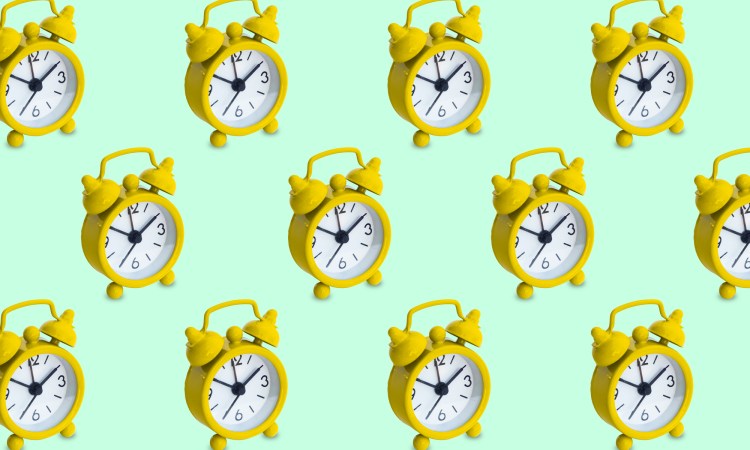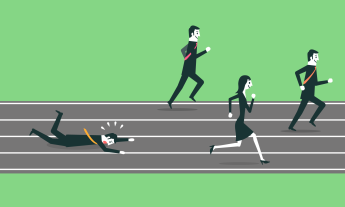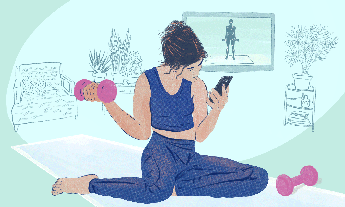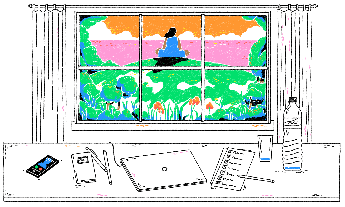
As we look ahead to a world with less work, or even no work, we can take control — by using our hours with greater meaning and purpose, says business thinker Tim Leberecht.
Many of us divide our days into 8 hours of work, 8 hours of leisure and 8 hours of sleep. But what will happen when a large number of jobs — some studies say as much as 50 percent in two decades — are replaced by machines? And how will this affect our understanding of time?
In a future where traditional employment is no longer the center of our lives, we humans will find ourselves forced to define (or redefine) how to have a good life. Or, in other words, how to have a good time.
But we’re not well equipped to do so. Starting from when we were children, many of us have been trained to watch the clock (what’s called a Taylorist framework) where we keep an anxious eye on the hours and manage our minutes to be as productive as possible. In our leisure hours, brands and advertising compete for our attention and our time — we can choose to spend an afternoon at the mall, at the movies, or glued to Netflix or our Twitter feed.
In a future where most of us have less than 8 hours of work to do, we face three primary challenges: living our lives on our own watch (and not our boss’s), filling our unstructured time with meaning, and measuring the true value of our time.
Here are five points to consider as we rethink our attitudes towards time:
Our story is what makes time meaningful.
To navigate a shifting sense of time, we’ll need to have a strong sense of self that can weather the turbulence, and defy a reductionist version of ourselves that’s merely the sum of our past data. We can best cultivate that first quality — a strong sense of self — through a narrative device: our story.
By asking questions like ‘Why am I here? Who am I? Where am I going?’ our story will connect past, present and future. It protects us from the fallacy of thinking that the most precious time is the time we haven’t spent yet, but it also prevents us from the kind of short-term thinking that we’re prone to, on an individual and organizational level. Initiatives such as Stuart Brand’s Long Now Foundation, Eric Ries’ Long-Term Stock Exchange, or Martin Reeves’ call to “build a business that lasts 100 years” all seek to overcome our short-term bias and encourage us to think more holistically about how we’ll use the time at our disposal in our lifespan.
Our unique story can serve as our purpose, our anchor in this maelstrom. So let’s pause, spend time alone and listen to our own story. Or, read a book, watch a movie, or sit around a fire with friends or strangers — one’s story can sometimes be found in other people’s.
Rituals imbue time with meaning.
The more we quantify all aspects of our lives, the more that time literacy will need to go beyond chronos, or purely numerical time, and encompass what the Greeks called kairos, the opportune time to act. One way to capture kairos is to rely on an ancient device: ritual.
Like kairos, rituals are qualitative and subjective rather than quantitative and objective. Rituals allow us to repeat profound experiences, while at the same time keeping them personal and unique. They combine the thrill of “being at the right place at the right time” with the assurance of “being at the same place at the same time.”
Imagine, for instance, if, as writer Alexandra Samuel has posited, we established coming-of-age rituals to prepare our offspring for digital events — getting their first smartphone or their first social-media account. Could such indoctrination lead to a more humane digital world?
For those of us who are older, what rituals might fold into our lives? Rituals divide time in a meaningful way; they give our existence value without striving to measure it. As boundaries blur between a different past, present and future; between different life stages; between work and leisure; and between human and machine, rituals can hep us signify, highlight and celebrate transitions and other special moments.
Wasting time is human, so let’s embrace it.
In the uncertain future of work, jobless workers and retirees will both have to manage the vacuum of “useless” time, and gig economy workers will have to contend with the time between gigs. The gaps between jobs (and paychecks) may be free of structure but they are rich with worry and anxiety.
As many tasks are taken over by much-swifter machines, we’ll all face stretches of boredom. In our current, activity-obsessed society, if you’re bored, you’re boring. If you’re bored, you’re lost. If you’re boring, you’re a loser. But boredom should not be a stigma.
In boredom, we’re forced to sit with ourselves and our discomfort instead of escaping into doing, and it can strengthen our resilience and mental flexibility. To prepare for the future, we need to make friends with boredom. Meditation and mindfulness initiatives have sprung up to teach people the ability to be comfortable with unstructured time. In a similar vein, social psychologist Amy Cuddy and others have dissected the ingredients of the concept of ‘presence’, of being confidently and fully in the here and now. Kevin Kelly suggests that wasting time can be a virtue. He considers it the source of scientific discovery, innovation and progress. Wasting time can lead us, often randomly, to discovering outlier ideas.
One model of wasting time can be found in the example of the 19th-century flâneur, the urban wanderer. Rather than the streets and avenues, immersive technologies such as VR or AR may serve as the modern flâneur’s new territory. Pokémon Go, for instance, masterfully combined reward-driven action with open-ended discovery, in the form of digressions, detours and serendipitous encounters. Nineteenth-century historian and writer Anaïs Bazin once proclaimed the original flâneur “the only true sovereign of Paris.” Perhaps the 21st-century flâneur will be the “only true human sovereign” of the machine age.
Technology can allow us to live in multiple timelines at once.
We humans mark time by dividing it into a series of small, equal units: hours, minutes, seconds. But using technology, we can chop up time into units that make sense to us alone, causing it to be hyper-personalized. So-called “quantified self” apps — such as Chronos, Instant and RescueTime — allow us to gather reams of data from our waking and sleeping hours and promise to give us more control over every second.
Meanwhile, ironically, while these apps and tools help us optimize time, there are just as many — like Facebook, Twitter and Amazon, as Tristan Harris and others have pointed out — that want to steal our attention, which is the currency of personal time. Attention is a nonrenewable resource, and we’ve become more and more aware of how much of it we’re losing to such time thieves.
But then, Silicon Valley’s ultimate triumph could be to render the concept of chronological time obsolete. AI can help us store versions of ourselves and extend our life cycles (with innovations like immortal AI doppelgangers). It visualizes the consequences of our actions for us (and even their own), while predictive analytics can assist us in anticipating events and making smarter decisions about the future.
All this combines to suggest that, just as now we travel with ease between different time zones, soon we could travel between different life lines. Already, VR and AR technologies let us time-shift — with our avatar, the environment or both — by assuming an old or future version of our reality. We’ll move to experiencing the pleasures and pressures of time that involves past, present, and future at once. In fact, we might need a new word to describe this new dimension of time: holotime — time which is not only nonlinear but also three-dimensional.
The time for time literacy is now.
Let’s teach time literacy as a subject from elementary school to college, offer it as an essential module of corporate learning and leadership programs, and make it an ongoing topic of discussion in our lives. We may continue to use tracking apps to improve our quantitative understanding of time, but to appreciate its qualitative aspects, we can make rituals our new habits, visit and re-visit past and future versions of ourselves, and practice some of the tasks that can give us a better understanding of how to play with time. These include composing, playing and recording music; making and editing a podcast or a video; designing and producing an event; keeping a journal; and writing a story, our story.
Time literacy not only forces us to become more conscious of our own hours and how we’re spending them; it also encourages us to nudge other people into examining how they’re using theirs.
That, in turn, will help all of us, now and in the future — until our time is up.












